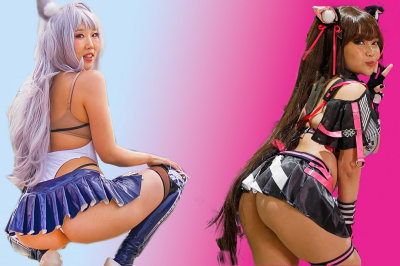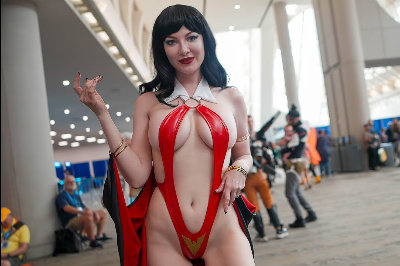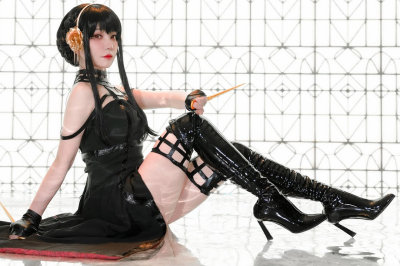ICE AGE - Q&A with director Chris Wedge
Just how accurate do you have to make an animated adventure set in the Ice Age?
"I was hoping we could make the film as accurate as possible. Then again we were making a story in which the animal characters have the power of speech, so we're using a little creative licence. We used as much reference as we could to help design the characters, and to help us choose which creatures to use. We also wanted to make something that looked natural but was very stylised."
Have you had any feedback on the film from people who specialise in pre-history?
"We did consult some at the very beginning, in our efforts to have some modicum of truth to inspire the setting. And they understood that we were making an animated film, they didn't feel we had to rigorously conform to anybody's idea about how the world was back then."
You feature human characters in the film, which has always been a tricky thing for computer animation to capture effectively. How did you go about it?
"Well for one thing they weren't Homo sapiens. It's really a style issue when you animate humans, my feeling is that if you're going to make it animated there should be something you want to do with the style because there are five billion people on the Earth that you could use in your movie otherwise. There are also technical challenges in making humans look too real, because the more real you make them the more demands you put on the animators to make them act properly, and not look like they have strange deformities or facial tics. As humans ourselves we have such a low tolerance for variation, when we look at people walking down the street we can tell if there's something wrong with somebody. So we stylise and that gives us an opportunity to make the animation, and the expressions, much broader."
The appeal of your film seems to come, in large part, from having a story that appeals to adults and children alike.
"You can't make a good movie out of a bad story; it's just not possible. All we can do is take a good idea or story, and start with that emotional core of the experience. What we do when we animate and design it is flesh out the ride. It's the touch and feel part of it, that's what the animation is. But people are going to be moved ultimately by the ideas and the story. We also have to satisfy ourselves that it's working, and worth animating. We're working constantly on all aspects of the production, from story to storyboards to design and animation and editing, all of that is going on at once which is a great luxury, because in the middle of a sequence we can tell ourselves it isn't working and go right back to the story process again, or re-animate. It's not like the film's in the can and we can't go back."
How long have you been working on this film?
"By the time the movie comes out I'll have been on it for three years, but the actual animation process was about 18 months. It was very quick. We've made our film on a very short schedule, and for substantially less money than the films to which we've been compared."
Is this speed due to increased computing power and the sort of software that's available to you?
"It's actually down to the people at our company, Blue Sky Studios, who have developed the software that we use to render the images. It's a question of necessity being the mother of invention. We just work very hard and very quickly."
Is it coincidence that your lead actors - John Leguizamo, Ray Romano and Denis Leary - all come from a background in stand up comedy?
"We definitely wanted to find actors who could carry the dramatic moments but also improvise and add to their characters. The whole process is such a collaborative effort, we would come in with a small maquette or drawings to show John, for instance, and he would look at the character and start playing around in front of the microphone. We would then take that back, animate something, and then show it to him. He would then make another adjustment. So we were all working together to make something that is it's own creature, with its own personality."
How aware are you of what your rivals in the computer animated field are up to?
"You have to be aware, because each of these films is promoted as 'the latest thing'. Everything is promoted as being bigger and better than the last one. That isn't what drives us to do it though. If you come across a situation that is similar, or an idea in your movie that's similar to one in someone else's you have to consider how you're going to change it and make it fresh or make it new."
Have your own kids been able to give you a running commentary on how you're doing, making this family film?
"My 17 year old daughter will tell me when something's not working. As for my four-year-old son, if he squeals with delight then I know to leave that bit in. I think you have to have kids to understand some of the sensibilities that we were after. Not that the story is limited to children, you just have to make it accessible for kids. You have to have sat in a theatre with one of your children to know how to trust the movie."
How about when you come to watch the film you've been working on for three years with the first preview audience?
"It's terrifying when the film isn't working. But I have to say it has been thrilling for me to watch ICE AGE with an audience. We think about what goes into it so hard and for so long, that it's a welcome affirmation of what we've been doing to have the audience react to it as they have. This is one thing I've learned. People go to the movies because they want to be entertained, they're begging, they're on their knees in front of the screen asking for the movie to lift them up and take them away. If the movie can do that they are very, very grateful. We've been fortunate that audiences have engaged with it, and have certainly helped us shape ICE AGE into something that is more fun and more accessible."
Question & Answer Text Copyright Twentieth Century Fox.



